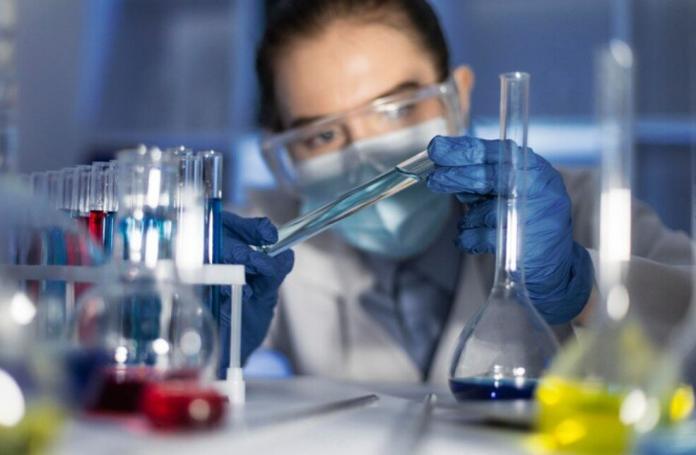Almost all creatures can have the laboratory testing done, but viruses are one such organism that is a potential source of harm and proliferation, with minimal scope for lab tests. As a result, they require special attention. And, given the current state of the world, humanity has seen what a tiny virus can do in no time. People are well aware of the viruses and other living creatures potentially detrimental to humans, whether in person or public. An antiviral testing laboratory can help know about living creatures and microorganisms.
Over the years, these labs have been instrumental in developing drugs, medicines, and hygiene aids like disinfectants. These labs have also provided information about even those organisms that a layperson can not see with naked eyes!
The pandemic itself is a living demonstration of the necessity of all aspects of health and sanitation. And to maintain good hygiene around us, we must follow the safest possible practices. One essential method in our day to day life can be to check on surfaces that we come in contact with. And if we are coming in direct contact with any character, it should be possibly disinfected or free from germs and bacteria.
Even the layperson is now aware of the many viruses and how to keep them away. However, there is still a greater need to be mindful of the standards and related procedures.
Many individuals are unaware of the medical terminology, but medical professionals know the many tests and assays. These tests suggest a wide range of fields and fronts. To maintain quality benchmarks, the worldwide standard organisation directs the processes and norms of the testing. ISO’s worldwide standards guide ISO-based testing labs. These standards guide the quality and assurance of procedures conducted by an antiviral testing laboratory.
Another similar safety standard is BSL. It is more prevalent in India but acceptable worldwide.
What does BSL stand for?
BSL stands for Biological Safety Levels. Biomedical research laboratories across the globe are classified into four categories, ranging from BSL-1 to BSL-4. This is done to verify that precautions are in place to protect lab staff and the surrounding environment from harmful microorganisms examined in these laboratories.
The CDC assesses a lab’s Biosafety Label based on the organisms being researched or worked on at that institution.
the most significant level of security
Around the world, at least 44 BSL-4 labs have been notified, including the Microbial Containment Complex (National Institute of Virology in Pune). There is just one BSL-4 lab in India, accredited in 2012. The BSL-4 facility is also used to undertake molecular evolution investigations.
Why does the antiviral testing laboratory hold so much importance?
Lab-based procedures still dominate the area of viral diagnostics. Nucleic acid amplification tests, genome sequencing, and antigen detection approaches have supplemented traditional methods. They primarily include viral cultures and electron microscopy. Because of their high specificity, shorter turnaround times, and lack of constraints, these labs have largely supplanted viral cultures as the gold standard in most clinical contexts.
Besides, development of antiviral materials, surfaces, and disinfectants also develop in these labs.
The development of antiviral materials:
The antimicrobial properties of various surface materials and coatings have been extensively researched. Materials’ antiviral or virucidal properties, on the other hand, are less understood. Viruses are not considered alive since they replicate and survive in the presence of a host, whereas bacteria are single-celled living beings. So, these studies become more complicated.
Many materials are antiviral and antibacterial. Structural and behavioural characteristics primarily govern these. However, there are considerable variances in how bacteria and viruses react to prophylactic measures and medicines. An antiviral testing laboratory can directly assist in defining and researching these distinctions.
There are numerous methods for distinguishing viruses and measuring their activity and global criteria for evaluating virucidal activity. The most often used tests for detecting viral presence and persistence.
The approaches may be divided into three types:
(1) Cell-based tests for determining viral infectivity
(2) gene or protein expression studies to determine the viral presence, and
(3) direct virus counting.
How is a test carried out in a testing lab?
Virus exposure times generally range from two to twenty-four hours. Because various viruses may react differently to the underlying material, a control material is added to compare the antiviral effects.
This data gives standard information to understand the appropriate functioning of antiviral activities. viruses interact with surfaces different ways. Antiviral characters may need to be tailored according to each virus. Temperature, humidity, and how viruses penetrate various surfaces are all variables that influence viral persistence.
Why is laboratory testing required for viral infections in humans?
Laboratory tests are performed to confirm the diagnosis of a viral skin infection. A detailed history and examination of the patient are essential, although laboratory testing can assist the doctor in making a diagnosis.
What is a viral swab?
A viral skin swab is a sterile instrument. It is brushed softly against a lesion. It is then placed in a viral transport medium and delivered to the antiviral testing laboratory for viral cell culture & virus detection.
What is viral resistance testing?
Virus resistance testing is performed to assist clinicians in determining which antiviral drugs may or may not be beneficial for infection. Because viruses can change quickly, far quicker than bacteria or fungus, this provides a therapeutic problem for clinicians, as antiviral treatments may begin to fail.
The most notable is HIV resistance, which poses a significant risk if the treatments cease to work. The analysis is done at the genomic level, which directly identifies antiretroviral medications resistant strain.
This study is less usually conducted at the phenotypic level, in which a virus is treated to assess how well it reacts.
Conclusion:
Natural remedies may provide the best balance of antiviral efficacy and environmental impact. Material science, scientists, researchers, and an antiviral testing laboratory may play essential roles in establishing conceptual and practical strategies to prevent viral epidemics. Existing and novel broad-spectrum antiviral medicines should be investigated since they may aid in future problems and planning.
Also read: Know All About the EN 14476 Testing








